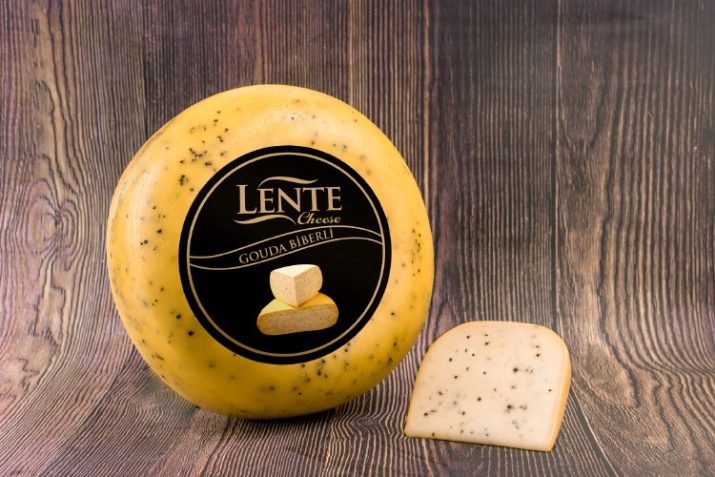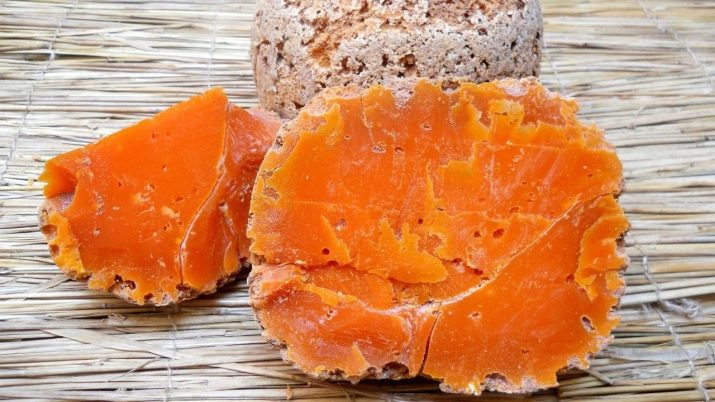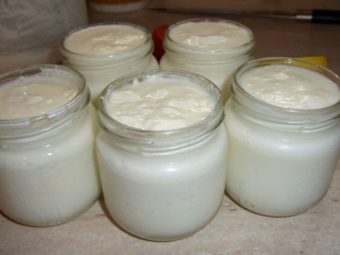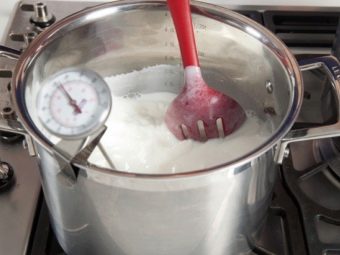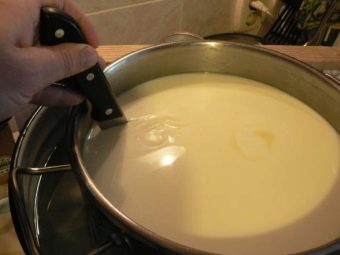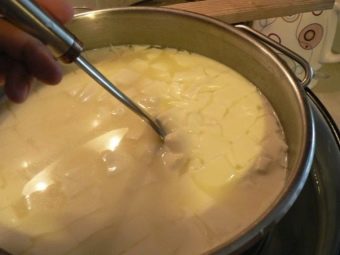Dutch cheese: features and composition, types and recipe
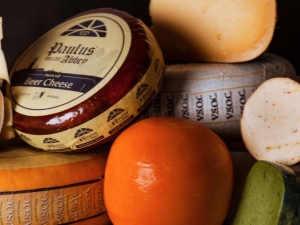
Dutch cheeses have long enjoyed great popularity, as they have a number of useful properties and interesting peculiar taste. At the same time there are quite a large number of different varieties. Yes, and at home, it turns out, it is quite possible to cook a delicious Dutch cheese recipe.
Story
Despite the name of the cheese, the recipe for its preparation did not appear in Holland. Its creators are considered the ancient Romans (I century BC. E.) He gained wide popularity during the Middle Ages, when the Netherlands was engaged in the development of the navy.
Food on the ship is one of the main components of a successful expedition, because the physical condition of the crew and its performance depended on it. Moreover, not all products have the ability to preserve their suitability for use for a long time.
That is why the main dish on the ships were cheeses with high energy value and capable of long storage. Due to the great attention paid to cheese products, its production has grown to a huge scale. New varieties appeared, which became known not only in the country, but also abroad.
Main characteristics
The main ingredient in Dutch cheese is pasteurized milk, which is fermented with the help of lactic acid bacteria. The peculiarity of this type of cheese is the yellow color of a pale shade and a sour taste with a nutty tone. If the product is the highest sample, it will have an eye-shaped pattern that evenly covers the head and may vary in size. Appearance is of no small importance: the surface is uniform and elastic, a thin crust, no damage. Cheese melts easily, it is often used for roasting.
Depending on the aging time, the taste of the cheese may vary. The same variety at different stages of maturation can be sweet, salty or sour. In the composition of the natural product, in addition to milk, yeast, calcium chloride and annatto dye, nothing more should be present.
In Holland believe that the best form for cheese - the cylinder, in which it is most convenient to carry out exposure.
The nutritional value of 100 g of the product averages 350 kcal, dominated by fats, followed by proteins and carbohydrates. Composition in percentage: fats - 52.1%, proteins - 46.6%, carbohydrates - 1.3%. The permissible limit of fat content is from 45 to 50%.
Selection
There are certain rules when choosing this type of product.
- Carefully study the composition to exclude the presence of non-natural components.
- Look at the surface, it should be yellow or with a white tint, smooth and without cracks, in which mold is formed.
- In the product that was stored incorrectly, if you look closely, you can see the oil discharge. Be careful when buying.
Benefit and harm
The use of Dutch cheese favorably affects human health: the blood sugar level is normalized, the bone system is strengthened, the condition of muscle tissue, hair and nails is improved. Such a beneficial effect for health is due to the nutrients that make up the product: phosphorus, iron, sodium, calcium, and vitamins of various groups.
Due to the high energy value, the product is able to satisfy hunger and restore the wasted strength in a short time, so even one cheese sandwich is enough for a full meal.
However, cheese can be harmful to some people. In case of problems with the liver and gall bladder, it is not recommended to use cheeses, as they strongly load the above-mentioned internal organs.
People suffering from obesity are also at risk, because the product contributes to the accumulation of body fat in the body. With a diet for weight loss, Dutch cheese is still included in the diet, provided it is consumed in small portions in order to satisfy hunger during fasting weeks.With an unhealthy digestive system, lactic acid, which is part of the product, can aggravate the condition, being an irritant.
Shelf life and storage rules
To extend the shelf life will help storage in the refrigerator at a temperature of + 6-8 degrees. It is best to wrap the product in the food film. These storage conditions are easy to organize in any modern kitchen, they will not allow hard cheese to spoil within two months, soft - 15 days. Cheese should not be frozen in the freezer, otherwise it will become crumbly. Cheese should not be stored on the same shelf with products that have a pungent smell.
If the product is dried, it can be grind grated. Grated cheese is well suited as an addition to pasta.
Varieties
The names of the most popular varieties, which will be discussed, for a long time always received positive feedback and were highly valued.
- Old Amsterdam. The honorable place among all is taken by the variety with the name Old Amsterdam. Milk is used for its production; its extract is not less than 18 months. The secret of cooking is kept secret, its keepers are members of the Westland family, who managed to create cheese with a taste reminiscent of caramel and walnut. Fruit with pistachios and figs, which have become an attribute of this variety, help to expand the taste sensations obtained from cheese. Also, the taste of Old Amsterdam goes well with sweet mustard, which is well complemented by other varieties.
- Edamer Another favorite is the variety called Edamer, which first appeared in the city of Edam. In a short time, cheese gained great popularity, despite the fact that then the Dutch products were not in demand because of close attention to cheeses of French and Italian origin. To harden the cheese, it takes an aging of two months. The variety is considered semi-solid and is sold in the form of a spherical head. If there are eyes, then their small amount.
- Gouda Variety Gouda was named after his homeland. To obtain a characteristic creamy taste, for which Gouda is valued, an aging period of nine months is necessary. During aging, the cylindrical form, in which it is most convenient to prepare the cheese, proved to be the best in practice. Ripening, Gouda gets a sharp taste.
- Maasdam. Less popular than previous varieties, but with its highlights is the Maasdam. Thanks to the many large holes of various shapes, the product caught the attention of Peter I, who praised him highly. After trying the cheese, you can feel the light taste of nuts. Gourmets prefer to serve smoked and dried fruits with this cheese.
- Bemster Bemster, unlike other varieties, is a creation of ordinary peasants who use milk in cooking, which is not processed. That is why this variety has a high fat content and a characteristic creamy taste. Most of the Dutch are convinced that if you combine Bemster with other dishes, all of its indescribable individuality is lost from it, because in Holland this cheese is eaten separately from other products.
- Leiden. To cook Leiden cheese, use skimmed milk, which is added to the cloves and cumin. In appearance, it resembles Gouda. Withstand cheese for six months. This variety goes well with other cheeses, resulting in a rather unusual pleasant taste.
- Doruwael. The crust of this variety is covered with red mold, which, unlike the secondary one, is not harmful to health. Cheese has a creamy taste. It is consumed separately from all dishes.
- Mimolet The most unusual variety, which belongs to the French, but by origin it is still "Dutch". It has a spherical shape and a relief gray crust. During the ripening period, flour mite and special worms are placed on the surface of the product. Because of their moves, a characteristic pattern and a nut-mustard flavor are obtained. A year and a half is a period of full maturation.
How to cook at home?
The principle of cooking is not much different from cooking classic Russian cheese. The essential difference between these two technologies: the use of whey, under which a layer of Dutch cheese is formed. The cooking process does not take you much time, but with aging will have to wait.
Ingredients Required:
- milk - 10 l;
- mesophilic starter - ¼ tsp;
- calcium chloride solution - 10% - 1.2 ml;
- liquid rennet - 2.4 ml;
- water - 3 l.
Recipe
- The milk is pasteurized and cooled to 32 °, then the starter is added. The rehydration process lasts for three minutes. The resulting mixture is stirred skimmer.
- Before adding a coagulant and calcium chloride to the pan with milk, pour them separately with warm water of 50 ml volume, for this purpose two containers are used. Then everything is evenly mixed.
- The resulting mass should ripen in a saucepan with the lid closed. For the formation of a clot of cheese, which will be covered with whey, it takes half an hour.
- The readiness of the clot is checked using a notch made by a knife. Then the incision site is raised, if the edges are even - serum will flow, otherwise wait another 10-15 minutes.
- The clot is cut into cubes of 1 cu. see. In order for the cubes to turn into cheese grains and become elastic, they must be mixed for 20 minutes at a temperature of 33 °.
- Further acidity decreases. 3 liters of whey are poured from the pan, then the same amount is poured over water and stirred for 25 minutes, raising its temperature to 38 °.
- At the next stage, a drainage bag is taken, the cheese mass is placed in it, which is carefully kneaded by hands to obtain a solid layer. On top of the clot in the bag should be a layer of whey, this will prevent air from entering the cheese head.
- Having finished with the formation of the workpiece, you must wait 15 minutes. In this short time, the process of self-pressing will occur. Another 15 minutes will be required for the back side. To avoid traces of the folds, the cheese must be removed from the bag when turned over.
- To press 2 kg of cheese takes half an hour. With each increase in the cheese mass by one kilogram, the duration of pressing increases by 1 hour.
- For salting, you need to make a brine: in 1 liter of boiled water, dissolve 1 kg of salt, 4 grams of calcium chloride, adding 2.5 ml of vinegar (9%).
- In a brine placed 0.5 kg of cheese for 3 hours. With a weight of 1 kg, the cheese should stay in brine for 6 hours and roll over after half this time.
- After salting, the head must be dried in the aging chamber at a temperature of 10-13 ° for 5-6 days. To prevent excessive drying and to preserve the texture characteristic of Dutch cheese, the head is covered with latex and stored in a shrink bag.
The final and longest stage: ripening at a constant temperature of 10-13 °, which lasts 60 days. Due to the high humidity in the chamber on the crust, mold can appear, it can be cleaned with a brush and water. After the crust dries, the cheese is placed back in the chamber.
In the process of cooking, you can add various spices and seasonings in a small amount. If you overdo it with additives, the cheese will get an unnatural taste.
See how hard Dutch cheese is prepared below.













